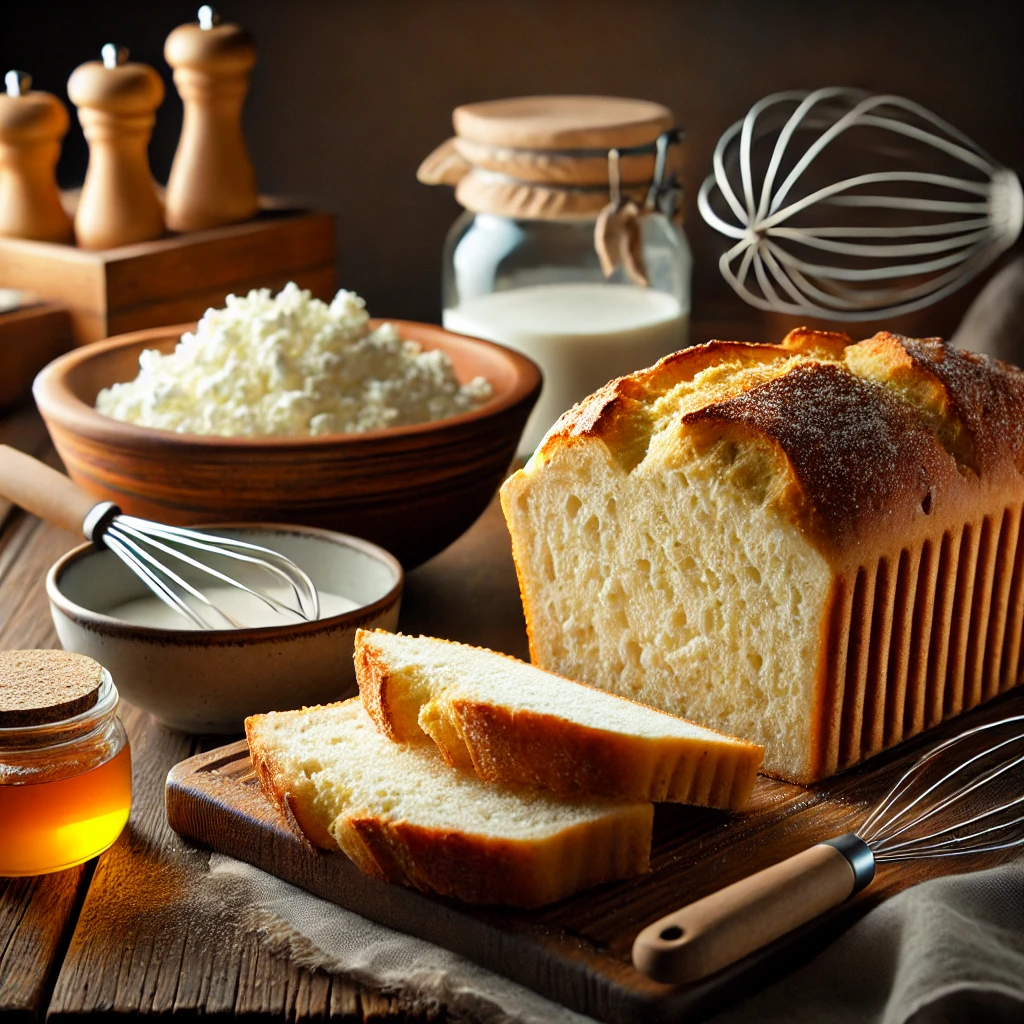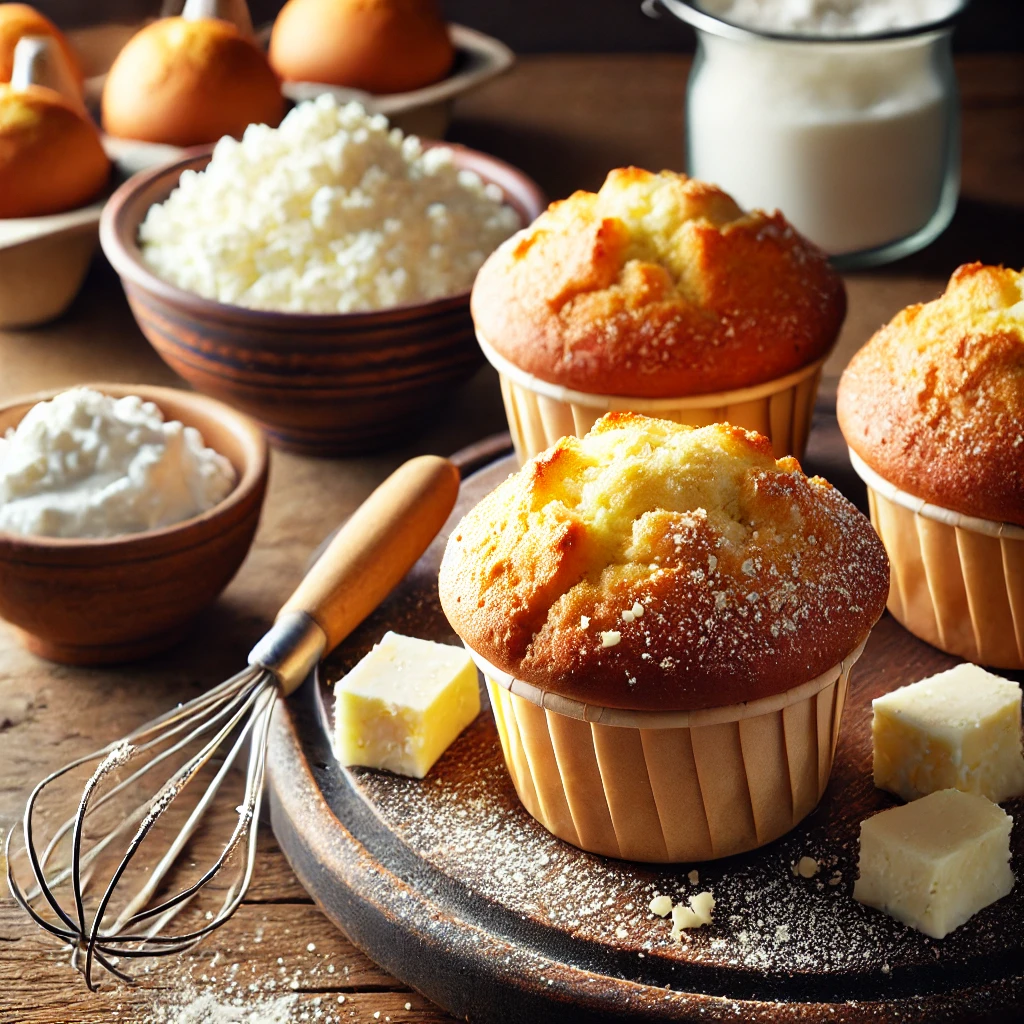Cottage cheese is a versatile ingredient in baking that can transform the texture, flavor, and nutritional profile of your recipes. Whether you’re baking bread, cakes, muffins, or pastries, cottage cheese serves as more than just a protein-rich addition. It enhances moisture, adds creaminess, and can even act as a substitute for other ingredients.
In this article, we’ll dive into the roles cottage cheese plays in baking, why it’s a great ingredient, and how you can use it in your recipes.
1. Enhances Moisture and Texture
Cottage cheese is high in water content, which helps keep baked goods moist. Unlike heavier ingredients like butter or cream, it adds moisture without making the dish overly dense.
How It Works:
- The creamy consistency of cottage cheese breaks down during baking, blending seamlessly into the batter.
- Its mild flavor ensures it doesn’t overpower the dish, allowing other flavors to shine.
Ideal For:
- Muffins, cakes, and quick breads that benefit from a tender, moist crumb.
- Flatbreads and savory pastries for a soft texture.
2. Boosts Protein Content
One of the standout benefits of cottage cheese is its high protein content. This makes it an excellent choice for health-conscious bakers who want to add a nutritional boost to their creations.
How It Works:
- Protein helps create structure in baked goods, improving stability and texture.
- Cottage cheese can complement flours with lower protein content, such as whole wheat or gluten-free flours.
Ideal For:
- Protein-rich bread, pancakes, and breakfast bars.
- Healthy baked snacks and desserts.
3. Acts as a Substitute for Other Ingredients
Cottage cheese is a fantastic substitute for ingredients like cream, butter, or ricotta in many recipes. Its versatility allows it to mimic the properties of these ingredients while offering a lower-calorie alternative.
Substitutions:
- Ricotta Cheese: Cottage cheese can replace ricotta in recipes like cheesecakes, lasagna, or stuffed pastries.
- Butter or Oil: In some recipes, blended cottage cheese can substitute part of the fat, reducing calories while maintaining moisture.
- Milk or Cream: Add blended cottage cheese to recipes for a creamy texture without the extra fat.
4. Adds Creaminess to Fillings
Cottage cheese is an excellent choice for creamy fillings in baked goods, particularly in savory dishes or desserts.
How It Works:
- When blended, cottage cheese becomes smooth and rich, making it ideal for custards, quiches, or pie fillings.
- The mild flavor pairs well with both sweet and savory ingredients.
Ideal For:
- Cheesecakes, fruit tarts, and cream-filled pastries.
- Savory quiches and tart fillings.
5. Improves Leavening
The natural acidity of cottage cheese can help activate leavening agents like baking soda, contributing to the rise and fluffiness of baked goods.
How It Works:
- The acidity reacts with baking soda, producing carbon dioxide bubbles that create a light, airy texture.
- This reaction is particularly useful in quick breads and muffins.
Ideal For:
- Pancakes, waffles, and scones.
- Muffins and cupcakes.
6. Enhances Flavor
Cottage cheese has a subtle tanginess that enhances the flavor profile of baked goods. It can add a slight savory note to sweet dishes or balance out richer flavors in desserts.
How It Works:
- Its mild tanginess complements sweet, savory, and spiced dishes.
- Cottage cheese blends seamlessly into batters, providing depth without overpowering the dish.
Ideal For:
- Cheesecakes, pound cakes, and cookies.
- Savory breads and biscuits.
7. Reduces Fat Without Sacrificing Texture
For bakers looking to create healthier versions of their favorite recipes, cottage cheese is an excellent low-fat alternative.
How It Works:
- Blended cottage cheese provides a creamy texture similar to butter or cream but with fewer calories and less fat.
- Its high protein content helps maintain structure, even with reduced fat.
Ideal For:
- Low-fat cakes, brownies, and muffins.
- Healthier bread and pastry recipes.

How to Use Cottage Cheese in Baking
1. Blend for Smoothness
- To avoid lumps, blend cottage cheese until smooth before adding it to batters or fillings.
2. Combine with Wet Ingredients
- Mix cottage cheese with other wet ingredients to ensure even distribution in the batter.
3. Adjust Flour Ratios
- Cottage cheese adds moisture, so you may need slightly less liquid or flour in some recipes.
4. Pair with Complementary Flavors
- Use cottage cheese in recipes that include fruits, herbs, or spices to balance its tanginess.
Popular Recipes Featuring Cottage Cheese
- Cottage Cheese Pancakes:
- Light, fluffy pancakes with a protein-packed twist.
- Cheesecake with Cottage Cheese:
- A lighter, creamier alternative to traditional cheesecakes.
- Cottage Cheese Muffins:
- Moist, tender muffins perfect for breakfast or snacks.
- Savory Cottage Cheese Biscuits:
- Flaky biscuits with a tangy, creamy finish.
- Protein Bread:
- High-protein bread for health-conscious bakers.
Benefits of Baking with Cottage Cheese
- Nutritional Boost: High in protein, calcium, and essential nutrients.
- Lower Calories: A healthier alternative to butter, cream, and full-fat cheeses.
- Versatility: Works in both sweet and savory recipes.
- Unique Texture: Adds a creamy, moist quality to baked goods.
Frequently Asked Questions (FAQs)
1. Can I use low-fat cottage cheese for baking?
Yes, low-fat cottage cheese works well, but it may have a slightly higher moisture content. Adjust flour ratios accordingly.
2. Should I blend cottage cheese before using it?
For smoother textures in cakes, fillings, or batters, blending is recommended.
3. Does cottage cheese add a strong flavor to baked goods?
No, cottage cheese has a mild flavor that blends well with most recipes.
4. Can I substitute cottage cheese for ricotta?
Yes, cottage cheese is a great alternative to ricotta in most recipes, though blending it may improve the texture.
5. Is cottage cheese suitable for gluten-free baking?
Absolutely! Cottage cheese pairs well with gluten-free flours to add moisture and structure.
6. Can I freeze baked goods made with cottage cheese?
Yes, most baked goods with cottage cheese freeze well. Allow them to cool completely before freezing.
7. What desserts can I make with cottage cheese?
Cheesecakes, pound cakes, and custards are just a few examples.
8. Is cottage cheese better for savory or sweet baking?
It’s equally suitable for both, depending on how it’s used and paired.
9. Does cottage cheese affect baking time?
It may slightly increase baking time due to its moisture content, so monitor closely.
10. How do I store baked goods with cottage cheese?
Store in an airtight container in the fridge for up to 3-4 days or freeze for longer storage.
Baking with cottage cheese opens up a world of culinary possibilities. Its ability to enhance texture, flavor, and nutrition makes it a valuable addition to your baking toolkit. Whether you’re making muffins, cakes, or savory pies, cottage cheese ensures your baked goods are not only delicious but also packed with wholesome goodnes


